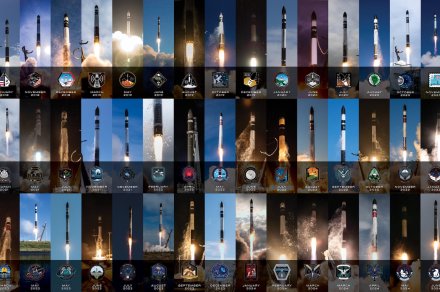SpaceX rival Rocket Lab preps landmark rocket launch

Rocket Lab is preparing to launch its workhorse Electron rocket for the 50th time.
The 18-meter-tall, two-stage rocket first flew in May 2017 and last launched on June 5, with most of its missions deploying small satellites for a range of commercial customers. The milestone mission is the first of five dedicated launches to deploy a 25-satellite constellation for French internet-of-things (IoT) company Kinéis.
The launch of the No Time Toulouse mission from Rocket Lab’s Launch Complex 1 in Mahia, New Zealand, is currently set for 6:13 a.m. local time on Friday, June 21 (2:13 p.m. ET on Thursday, June 20).
The mission was supposed to get underway on Wednesday local time, but unfavorable weather conditions forced the mission team to reschedule. Other launch opportunities are available over the next 10 days should the weather refuse to play ball.
Rocket Lab is understandably excited at the prospect of watching its Electron rocket climbing skyward for the 50th time. “Making it to your first launch is not a given, so reaching 50 Electron launches is an enormous achievement and a rare feat in the history of spaceflight,” Rocket Lab founder and CEO Sir Peter Beck said in a post on the company’s website. “I’m immensely proud of the team for bringing an industry-defining rocket to market, making frequent and reliable dedicated small launch a reality for the first time.”
He also thanked Rocket Lab customers “for helping us to make Electron one of the most frequently launched rockets of all time.”
Kinéis, the customer for Electron’s 50th flight, is backed by private and public investors who include the French government’s space agency CNES (Centre National d’Études Spatiales) and CLS (Collecte Localisation Satellites), an international space-based solutions provider.
Rocket Lab is continuing to cement its presence in the satellite-deployment sector, competing with SpaceX’s rideshare services involving its trusty Falcon 9 rocket. As part of expansion efforts, Rocket Lab began launching from U.S. soil in January 2023, and is also building a more powerful next-generation rocket, called Neutron, that will be capable of carrying humans.
Folks interested in watching the Electon’s 50th flight can do so via the player embedded at the top of this page. Coverage will begin at 5:15 a.m. local time on Friday, June 21 (1:15 p.m. ET on Thursday, June 20), which is about an hour before launch. Be sure to check out Rocket Lab’s social media feed for confirmation of the launch time, as the weather in the area is reportedly still a bit unsettled.
Editors’ Recommendations
-
SpaceX Starship rocket survives reentry mostly intact in fourth test flight -
SpaceX given clearance to launch Starship megarocket this week -
SpaceX spacecraft looks amazing in this new museum display -
SpaceX’s Starlink internet service reaches milestone -
SpaceX photos show important Starship preflight rehearsal
![]()
Not so many moons ago, Trevor moved from one tea-loving island nation that drives on the left (Britain) to another (Japan)…
A SpaceX rocket just set a new flight record

A SpaceX Falcon 9 booster launches for the 21st time in May 2024. SpaceX
SpaceX has launched and landed a first-stage Falcon 9 booster for a record 21st time.
Watch SpaceX stack Starship rocket ahead of fourth test flight

SpaceX chief Elon Musk shared a video on Thursday showing the Starship rocket being stacked on the launchpad ahead of its fourth test flight.
The footage (below), which has been sped up, shows the spacecraft section being placed atop the booster at SpaceX’s Starbase launch facility in Boca Chica, Texas. The fully stacked vehicle stands a colossal 120 meters tall.
SpaceX facing FAA review of Starship launches from Kennedy

SpaceX currently launches the Starship — the most powerful rocket ever built — from its Starbase facility in Boca Chica, Texas, but it also wants to launch it from the Kennedy Space Center in Florida.
For that to happen, its plans will first have to be cleared by the Federal Aviation Administration (FAA) by way of an environmental review, the agency announced on Friday.


